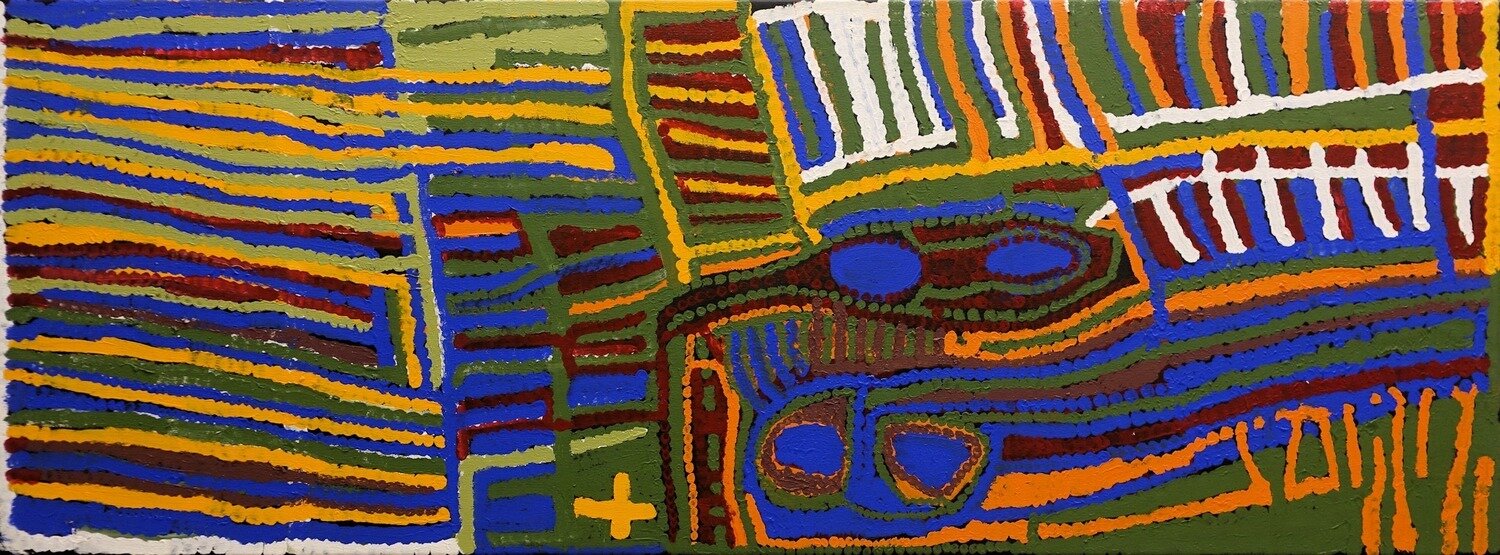Langarung (2007) by Weaver Jack 66x183cm
"Langarung (2007)" by Weaver Jack who explained her paintings as a self-portrait to Emily Rohr of Short Street Gallery:
“This is me, this mine, the whole lot is me, this is me. I’ve been walking all around. I know him proper way, he is always here, (in her heart), we are same one, my country is me. He long way that way, but he still here.”
In looking at Weaver's work, one must understand the intimacy that the work contains. Often Weaver would place a cross in the painting, which was once thought to be a signature, but is is actually a self-representation, that provides the link to understand that she and her land, Lungarung, are one - it is a self-portrait in country.
Weaver Jack primarily paints her traditional country south of Well 33 on the Canning Stock Route. When she first started to paint, the outlines of the country were laid bare on the canvas. Like a skeleton of the country, slowly she reclaimed this country dotting over it, loosely at first. She said these where her people walking all around that country, collecting mayi (bush food) and hunting for kuwi (meat). Slowly, the country merged with the people. It was then she started putting herself in the paintings,and through her painting, Weaver managed to reclaim her country. Each turn of her brush captures the intimacy in which she knows her subject. It is an intimacy that is almost impossible to comprehend. It is an extension of herself. She takes discordant colours which represent all the things she eats, and the seemingly disordered is transformed and placed very deliberately in its right place, revealing its perfection. For Weaver, she and her land are inseparable: they are the same. We realise this does not fit in with conventional western views of portraiture, but portraiture is about extending our perceptions of who we are. To understand Weaver, one must know her land, because they exist together and define each other.
Provenance: Short St Gallery Cat #10853
GALLERY GONDWANA
ABN: 75 009 652 046
All prices displayed in AUD, GST included.
Gallery Gondwana acknowledges the First Peoples of this land and recognises their continuous connection to culture, community and Country.
CONTACT US
+61 417 75 74 75
+61 417 27 44 31
roslyn@gallerygondwana.com.au
PO Box 3770, Alice Springs NT 0871 Australia
Vatu Sanctuary
Saturate yourself and be inspired by the power of Aboriginal art in a living gallery environment.

All Rights Reserved | Gallery Gondwana
